I try to live by the runner’s mantra “dress for mile 2.” It is OK to be chilly at the beginning. You don’t want to be frigid and unbearably unhappy while winter hiking, but a wee bit cold is good. The point of understanding our layers and how our bodies do in the cold is so that we do not overheat and sweat. Sweat quickly turns cold and can send you into hypothermia without you even knowing. So, as soon as you feel sweaty, either take off a layer, open a vent or expose your neck or wrists. Adjust this list per how your body heats as it is moving.
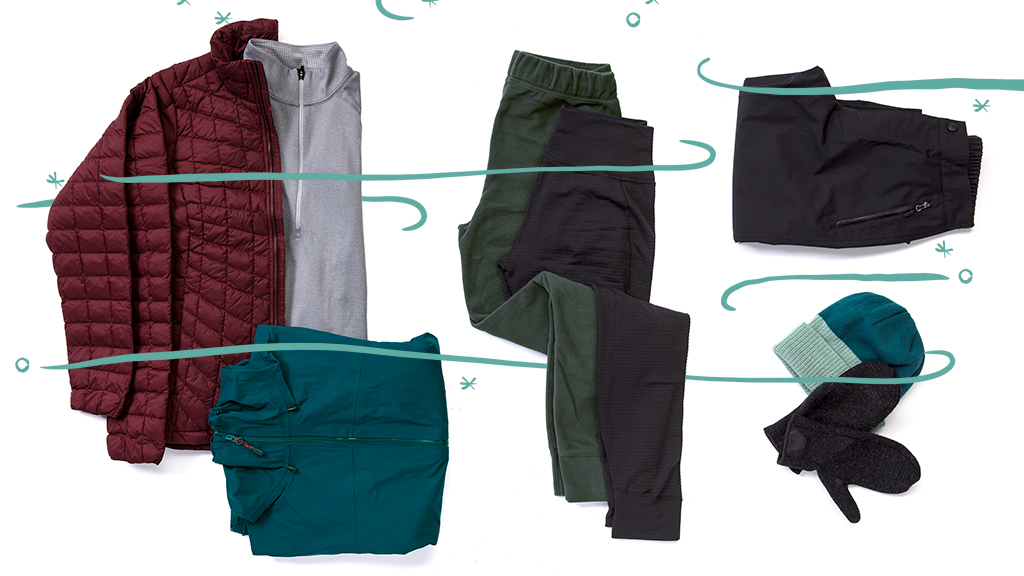
The goal in the winter is to be like a beautifully layered butter biscuit. You want a bunch of thin layers (the dough) with heat trapped in between (the butter).
Undies
I wear Duluth Trading men’s Buck Naked™ Underwear. However, I would say that if you could afford merino wool underwear, it would be the best option. I don’t think I would need to be brand specific. Moreover, there is the saying “cotton is rotten.” I do my best to live by that saying even in my “normal” life. I wear as much clothing made from natural fibers like merino wool or alpaca as possible. But there is the accessibility portion with how much things cost, right? So, if the [cost] barrier of merino underwear is blocking someone from feeling like they can get out in the winter, cotton is just fine! We will layer non-cotton things on top of that.
Base layer
The goal in the winter is to be like a beautifully layered butter biscuit. You want a bunch of thin layers (the dough) with heat trapped in between (the butter). You can choose any brand here. I choose ones that people give to me as gifts or whatever is already in my closet. If you tend to get cold easily, two thin base layers on the bottom or one thicker layer is always a good idea. Never be afraid to double up.
Side note: My butt and thighs are extremely susceptible to the cold. I have gotten chilblains [a painful inflammation of small blood vessels in your skin due to exposure to the cold] several times. A great option is to take a pair of fleece pants from the thrift store, cut them off at the knee, and wear them under your shell pants and over the base layers for added coverage.
Mid layer
This is where we are trapping the most heat. My mid layer has become quite special to me: an alpaca hoodie from Appalachian Gear Company. A fleece would do fine here, but I’ve never actually owned a proper fleece. I would say that any “animal” layer would do well here: sheep and alpaca wool are great options. I will wear my merino Fjallraven Henley shirt beneath this layer as well.
At this point, we might be three layers in. Vests can be good here as well. I like to remind people that every body produces heat in such different ways. On milder days (above freezing), I’ve found that I do not like to use vests when I’m moving. Say it’s above freezing and I’m hiking in varying terrain, I personally get too warm with a vest on with all the other layers. If it is nice out and not windy, a vest without a shell is a fine option. I do like to have it when I get into camp: It’s that extra layer that really traps heat. On a cold, windy subzero day I will add a vest as a layer.
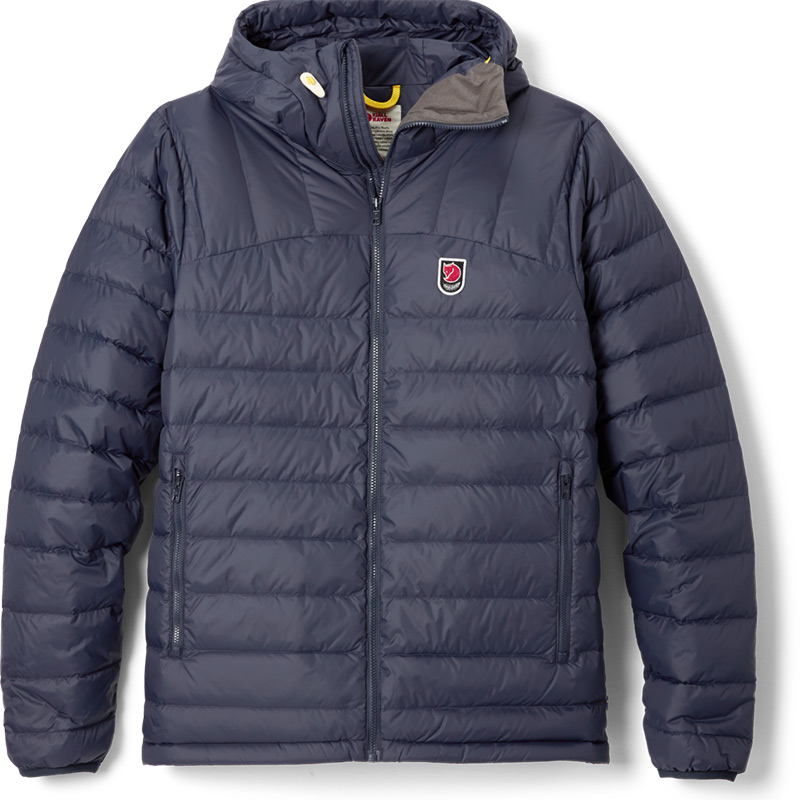
Puffy jacket
I run (dog sled mushing) with a Fjallraven down jacket. It is not ultra-puffy, but it does the trick. I will not usually wear this as I am hiking. I will put it on every time I rest to keep any heat in.
Outer jacket
A rain jacket is perhaps one of the most versatile layers. I wear either Fjallraven or Patagonia. I wear my rain jacket all year round. Nearly regardless of the layers that you have beneath, a rain jacket will block out the wind and trap heat. The wind is a heat thief, and the more you can protect yourself, the better. If I’m on a long expedition, I will wear my Wintergreen Anorak. Having an anorak is a basic must for many winter explorers.
Outer Bottoms
Rain pants do well as shell pants. It is like its sister, the rain jacket. I wear Mountain Hardwear or Fjallraven.
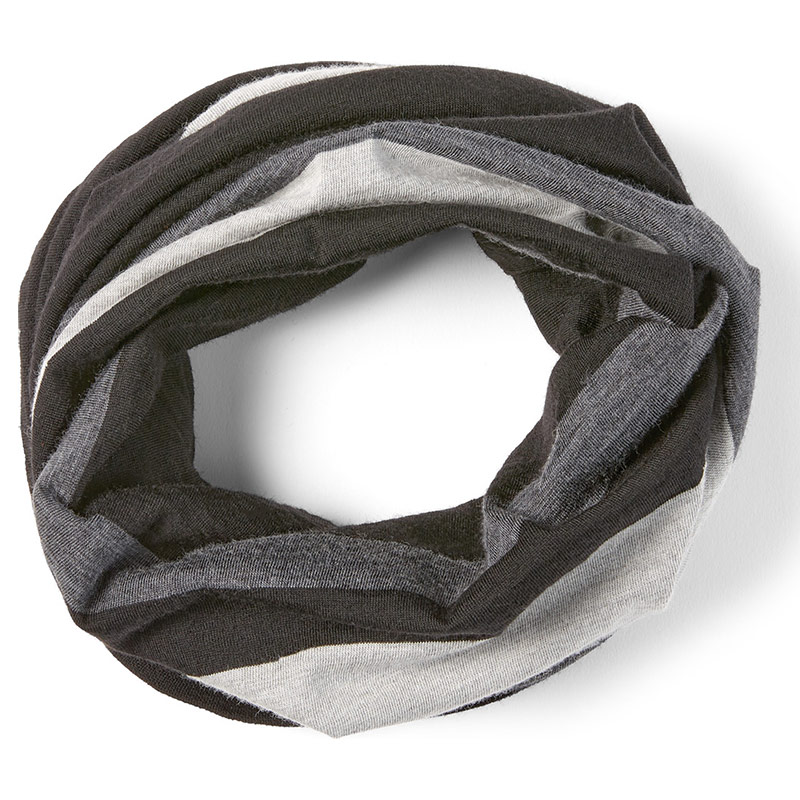
Neck gaiter
Your neck has so many veins and arteries cruising through it. Buff and other brands make gaiters of all thicknesses. I like a midweight merino gaiter; not too thick and not too thin. I wear these to keep the wind off my neck and for sleeping in the winter. They are nice because you can generally breathe through them. I bring a couple along since they generally get iced over or wet from breathing through them.
Socks
Any wool sock will do here, but my go-to brands are Darn Tough, Smartwool and Farm to Feet. This is where you should avoid cotton at all costs. Feet sweat more than we realize [and cotton absorbs sweat, saturates quickly and dries slowly]. Wool can retain heat even when wet. Merino wool is a great option. When on long trips, a thin wool sock, a vapor barrier and then a thick sock will help keep feet happy. Never forget that you can layer anywhere on your body. Before I could afford so many socks, I would wear my worn-out merinos under thicker socks. Socks are the one thing that I over pack. Do not be afraid to stop midday and change socks. Dry feet are happy feet.

Boots
Foot comfort is an extremely personal part of hiking. Here are my different boot choices, depending on the weather:
- Baffin Borealis: The removable neoprene liner can be dried out at night in your sleeping bag. The downside: If the terrain is rough, you might wear through the bottom of the boots. But if you are hiking on ice or snow, they are amazing
- Salomon Quest hiking boots: Another waterproof boot, a bit more breathable than the Baffins as well. Great for any terrain. When the weather is above freezing, I’ll wear a trail running shoe: Salomons are my go-to here. I have very sweaty feet and trail runners are quite breathable. With a good pair of socks, you can go a long way with runners.
- When it is arctic cold and there is a lot of snow, I wear Steger mukluks or Cooke Custom Sewing® Mukluks. They are both the warmest boots that I own that are also comfortable to hike in. Not much stability, though. I will bring these with me as camp boots if I’m not using them for hiking.
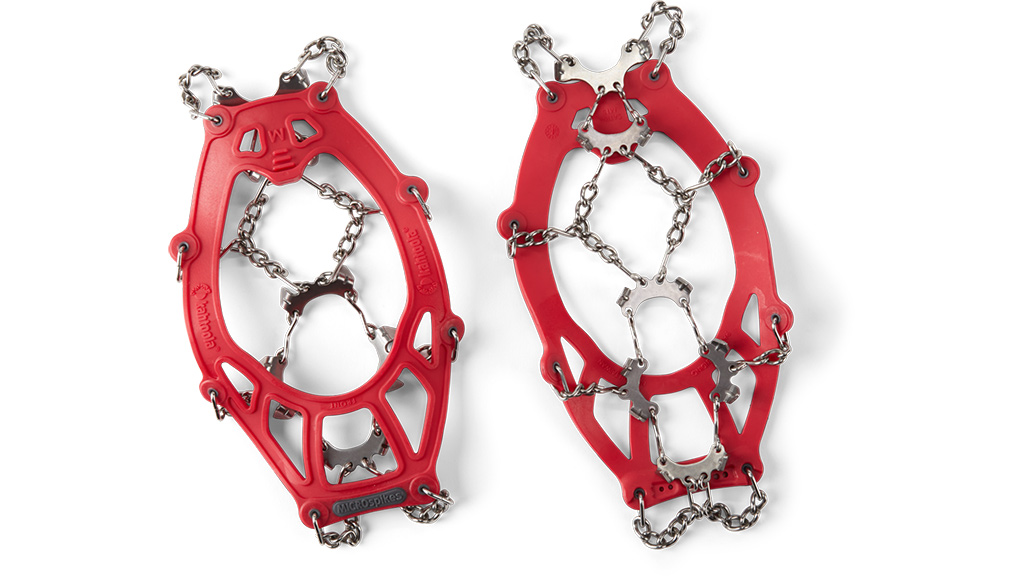
Winter Traction Devices
Kahtoola MICROspikes. The best. The only microspikes I will ever buy for hiking.
Gloves/Mittens
The hands are like the feet in that they vary for every person in how much they sweat. I rarely run with gloves. My hands are too cold and sensitive for me to not have my fingers touching each other for accumulated body heat. Here are my go-tos:
- Thin, crappy “one size fits all” glove: These are usually cotton, but they are just enough to keep the heat in on a warmer day. They are also a nice extra layer inside a mitten.
- Manzella mittens: I love my thin, fleece-lined mittens to the moon and back. They block the wind, but the material also breathes so you don’t get too sweaty.
- Hestra leather mittens with wool liner: Also known as “choppers” in the Midwest. These are nice and warm! A perk is that the liner can come out so that you can use the leather mitten as a shell layer or just a wind-protective layer.
- Helly Hansen mittens: Ultra warm, no liner, good for a really, really cold day.
- Black Diamond shell mitten. These are good with a thin layer beneath to keep the wind off, or as an extra heat-trapping layer with thicker mittens. Don’t let the thin design deceive you!

Water Bottle
Nalgene bottles are brilliant to have. I wouldn’t ever bring along anything else. At night I like to throw a hot-water bottle into my sleeping bag before I get in to “preheat.” I love my Forty Below Bottle Boot [insulated sleeve], but any will work. I made one out of the legs I cut off my fleece pants when I turned them into shorts. I do not use a hydration bladder in the winter because I always forget to keep the line clear of water, which can then freeze.
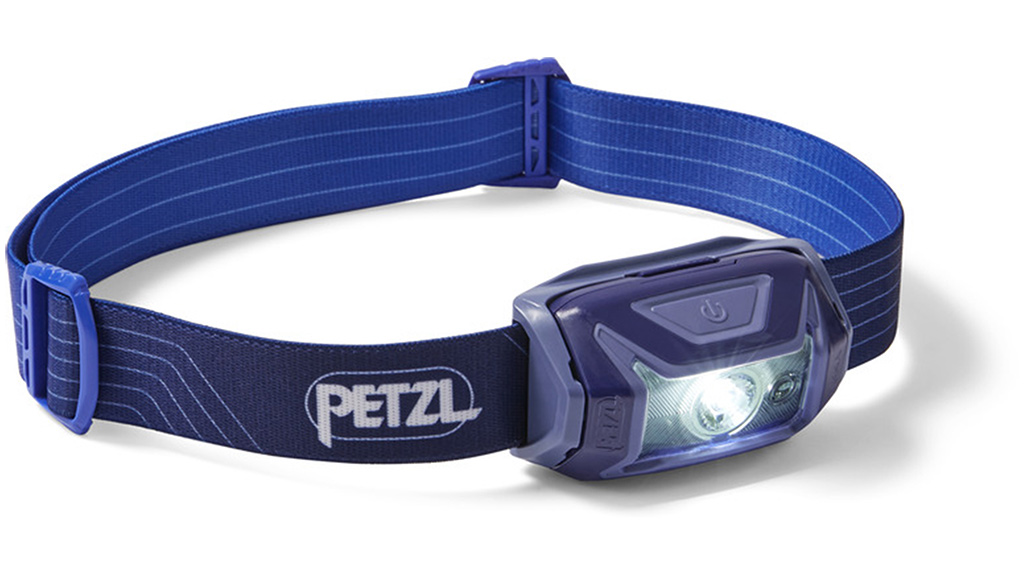
Headlamp
Petzl Tikka headlamp. My biggest recommendation for whatever headlamp you bring is to pack extra batteries or a way to charge your headlamp. In northern Minnesota in the winter, it is darker longer all winter and I use my headlamp for a good portion of the day.
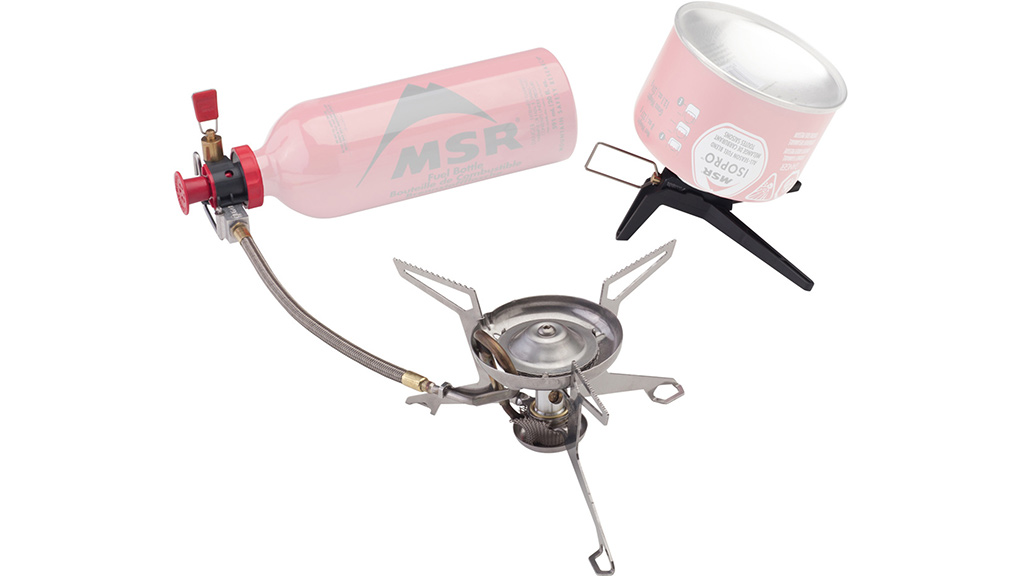
Stove
MSR WhisperLite. In winter, having a pump stove is optimal. Colder weather can depressurize pocket rocket canisters. You can put them in your jacket to warm them up, but I prefer a stove that I can pressurize. On a day hike, I will bring a tumbler with a hot beverage and leave the stove at home. On overnight trips, I will bring the MSR WhisperLite. I don’t want to wake up in the morning and shove a cold canister in my shirt.
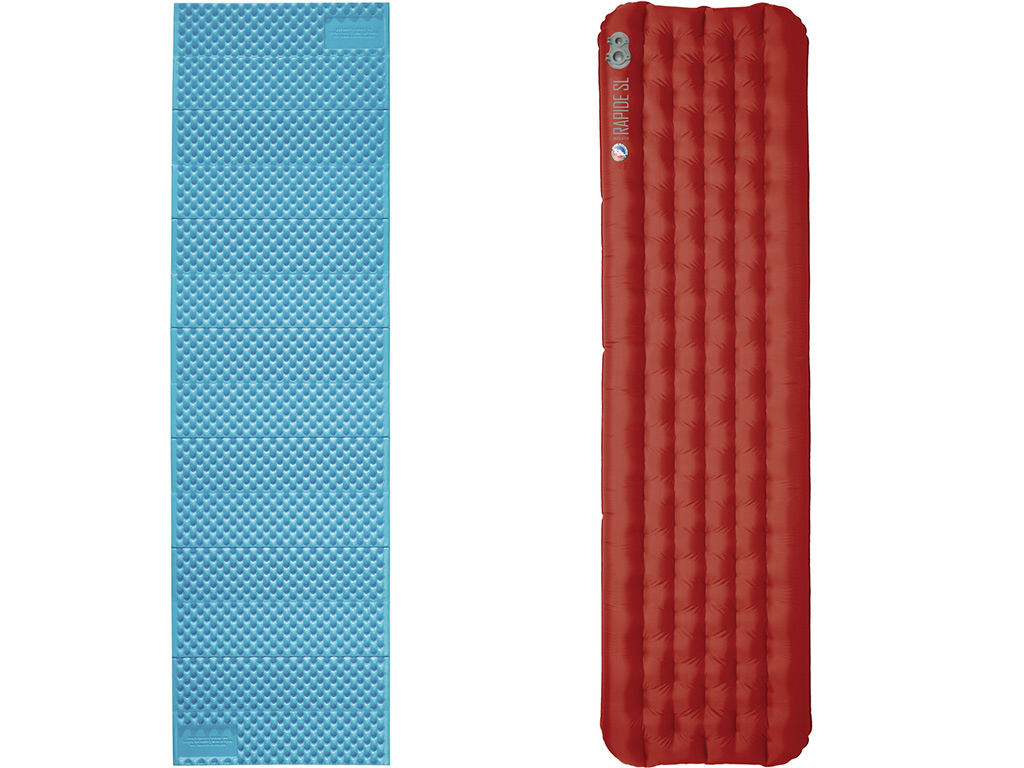
Sleeping pad
Therm-a-rest Z-Lite. For any winter sleep system, pay attention to insulation, which is measured in R-values (the higher R-value, the warmer). Again, we can layer up and compound our R-value. The Z-Lite is a good first layer: It blocks the cold from seeping through a blow-up bed. I also use the Big Agnes Rapide SL on top of my Z-Lite.
Sleeping bag
Another spot where you can layer! I use a Western Mountaineering 0-degree F bag for most nights. If it is going to be below 10 degrees F, I will add on a 0 degree F Enlightened Equipment quilt. The dogs can sleep under it too! If it is going to be beyond 50 below, I will add an Appalachian Gear alpaca liner to help keep the heat in. I like having this layering system on long trips since every night can vary in temperature.
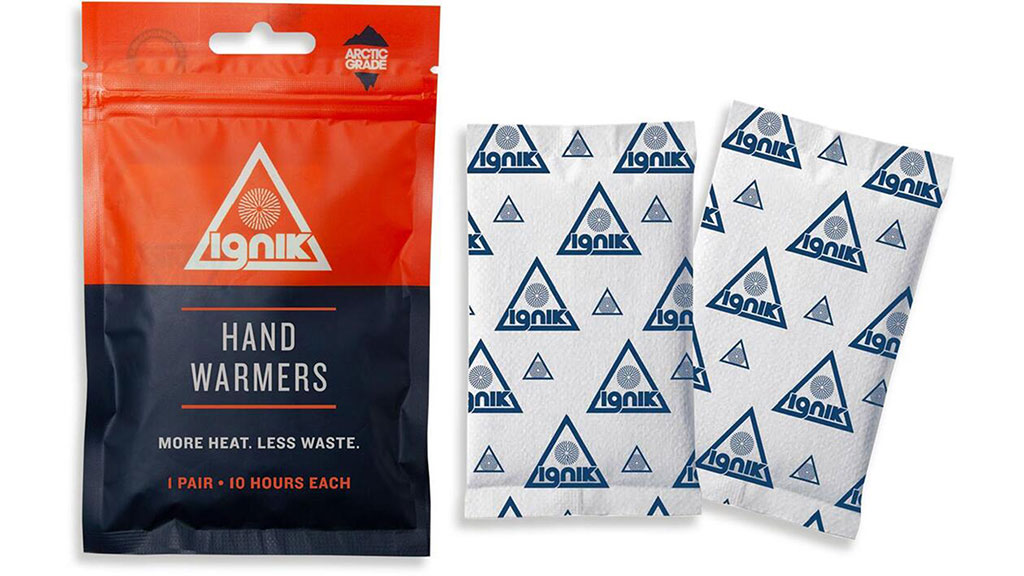
Hand warmers
Never be afraid to bring a few along on a trip. I use these to keep myself warm on chilly mornings and to keep my batteries warm while they are charging.
Backpack
Granite Gear is always my go-to. I have found that these packs fit many different body shapes and sizes, and they are super helpful with fitting if it’s your first time (or your millionth time … I still go get fitted when I get a new pack).
Trekking poles
Any brand will do here. On slippery or difficult terrain, having an extra balance system is key.
Learn why Emily Ford loves hiking in winter in this Wild Ideas Worth Living podcast.
